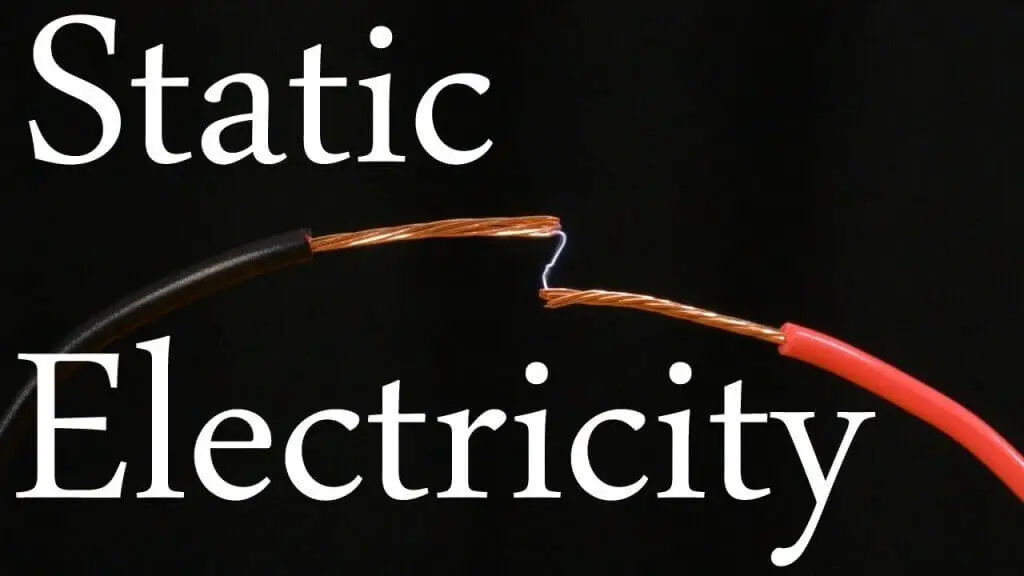Static electricity is an imbalance of electric charges within or on the surface of a material. The charge remains until it is able to move away by means of an electric current or electrical discharge. Static electricity is electricity that does not flow in a current. Static electricity generated by rubbing two nonmagnetic objects together. The friction between the two objects generates attraction because the substance with an excess of electrons transfers them to the positively-charged substance. Usually, substances that don’t conduct current electricity (insulators) are good at holding a charge. These substances may include rubber, plastic, glass or pitch. The electrons that are transferred are stored on the surface of an object.
Static electricity presents fire and explosion hazards during the handling of petroleum and tanker operations. Certain operations can give rise to accumulations of electric charge which may be released suddenly in electrostatic discharges with sufficient energy to ignite flammable hydrocarbon gas/air n-fixtures; there is, of course, no risk of ignition unless a flammable mixture is present. There are three basic stages leading up to a potential static hazard:
- Charge separation,
- Charge accumulation and
- Electrostatic discharge.
All three of these stages are necessary for an electrostatic ignition.
Charge Separation
Whenever two dissimilar materials come into contact charge separation occurs at the interface. The interface may be between two solids, between a solid and a liquid or between two immiscible liquids. At the interface, a charge of one sign (say positive) moves from material A to material B so that materials A and B become respectively negatively and positively charged. Whilst the materials stay in contact and immobile relative to one another, the charges arc extremely close together. The voltage difference between the charges of opposite sign is then very small, and no hazard exists. The charges can be widely separated by many processes, such as:
- The flow of liquids (e.g. petroleum or mixtures of petroleum and water) through pipes or fine filters.
- The settling of a solid or an immiscible liquid through a liquid (e.g. rust or water through petroleum).
- The ejection of particles or droplets from a nozzle (e.g. steaming operations).
- The splashing or agitation of a liquid against a solid surface (e.g. water washing operations or the initial stages of filling a tank with oil).
- The vigorous rubbing together and subsequent separation of certain synthetic polymers (e.g. the sliding of a polypropylene rope through PVC gloved hands).
When the charges are separated, a large voltage difference develops between them. Also, a voltage distribution is set up throughout the neighbouring space and this is known as an electrostatic field. As examples, the charge on a charged petroleum liquid in a tank produces an electrostatic field throughout the tank, both in the liquid and in the ullage space, and the charge on a water mist by tank washing produces a field throughout the tank.
If an uncharged conductor is present in an electrostatic field it has approximately the same voltage as the region it occupies. Furthermore, the field causes a movement of charge within the conductor, a charge of one sign is attracted by the field to one end of the conductor and an equal charge of opposite sign is left at the opposite end. Charges separated in this way are known as induced charges and as long as they are kept separate by the presence of the field, they are capable of contributing to an electrostatic charge.
Charge Accumulation
Charges, which have been separated, attempt to recombine and neutralise each other. This process is known as charge relaxation. If one, or both, of the separated materials carrying a charge, is a very poor electrical conductor, recombination is impeded and the material retains or accumulates the charge upon it. The period of time for which the charge is retained is characterised by the relaxation time of the material, which is related to its conductivity; the lower the conductivity the greater is the relaxation time.
If a material has a comparatively high conductivity, the recombination of charges is very rapid and can counteract the separation process, and consequently little or no static electricity accumulates on the material. Such a highly conducting material can only retain or accumulate charge if it is insulated by means of a poor conductor, and the rate of loss of charge is then dependent upon the relaxation time of this lesser conducting material.
The important factors governing relaxation are therefore the electrical conductivities of the separated materials and of any additional materials, which may be interposed between them after their separation.
Electrostatic Discharges
The electrostatic breakdown between any two points, giving rise to a discharge, is dependent upon the strength of the electrostatic field in the space between the points. This field strength, or voltage gradient, is given approximately by dividing the difference in voltage between the points by their distance apart. The field strength of about 3,000 kilovolts per metre is sufficient to cause breakdown of air or petroleum gases.
The field strength near protrusions is greater than the overall field strength in the vicinity and discharges therefore generally occur at protrusions. A discharge may occur between a protrusion and space in its vicinity without reaching another object. These single electrode discharges are rarely, if ever, the incentive in the context of normal tanker operations. The alternative is a discharge between two electrodes adjacent to each other. Examples are:
- Between sampling apparatus lowered into a tank and the surface of a charged petroleum liquid.
- Between an unearthed object floating on the surface of a charged liquid and the adjacent tank structure.
- Between unearthed equipment suspended in a tank and the adjacent tank structure.
Two-electrode discharges may be an incentive if various requirements arc met. These include:
- A discharge gap short enough to allow the discharge to take place with the voltage difference present, but not so short that any resulting flame is quenched.
- Sufficient electrical energy to supply the minimum amount of energy to initiate combustion.
- The nearly instantaneous release of this energy into the discharge gap.
Whether the last requirement can be fulfilled depends to a large extent on the conductivity of the electrodes. In order to consider this further it is necessary to classify solids and liquids into three main groups:
The first group is the conductors. In the case of solids, these are the metals, and in the case of liquids the whole range of aqueous solutions including seawater. The human body, consisting of about 60% water, is effectively a liquid conductor. The important property of conductors is that not only are they incapable of holding a charge unless insulated, but also that if they are insulated and an opportunity for an electrical discharge occurs, all the charge available is almost instantaneously released into the discharge.
Discharges between two conductors occur as sparks and are much more energetic and potentially dangerous than those occurring between objects, one of which is not a conductor. In the latter case, discharges often take a more diffuse and much less dangerous form, known as corona or brush discharge, rather than a spark.
The second group is the non-conductors, which have such low conductivities that once they have received a charge they retain it for a very long period. Alternatively, they can prevent the loss of charge from conductors by acting as insulators. Charged non-conductors arc of primary concern because they can transfer charge to, or induce a charge on, neighbouring insulated conductors which may then give rise to sparks. Very highly charged nonconductors may themselves contribute directly to incentive sparks.
The third group is a range of liquids and solids with conductivities intermediate between those of the first two groups. The liquids have conductivities exceeding 50 pS/m and arc often known as static non-accumulators. Examples are black oils (containing residual materials) and crude oils, which typically have conductivities in the range of 10,000-100,000 pS/m. Some chemicals, for example, alcohols, are also static non-accumulators.
The solids in this intermediate category include such materials as wood, cork, sisal and naturally occurring organic substances generally. They owe their conductivity to their ready absorption of water and they become more conductive as their surfaces arc contaminated by moisture and dirt. In some cases thorough cleaning and drying may lower their conductivities sufficiently to bring them into the non-conductive range.
If materials in the intermediate conductivity group are not insulated from earth, their conductivities are normally sufficiently high to prevent accumulation of an electrostatic charge. However, their conductivities are normally low enough to inhibit production of energetic sparks.


Leave a Reply